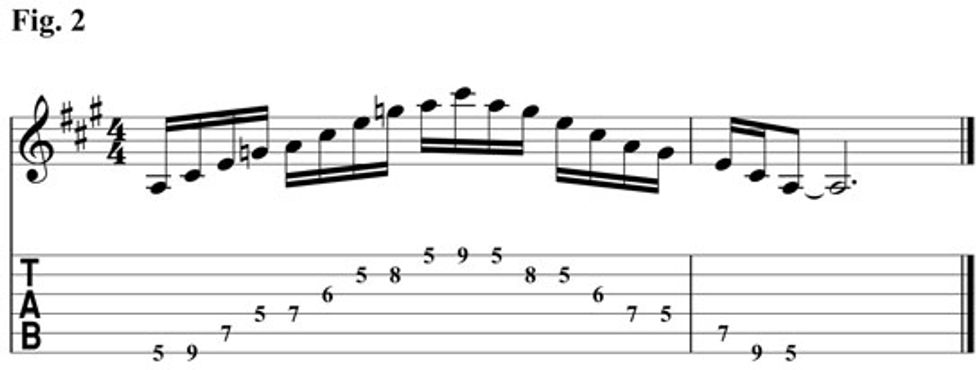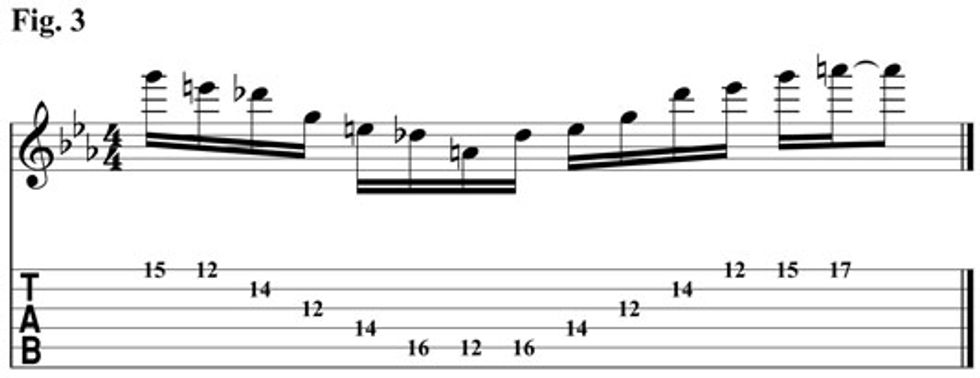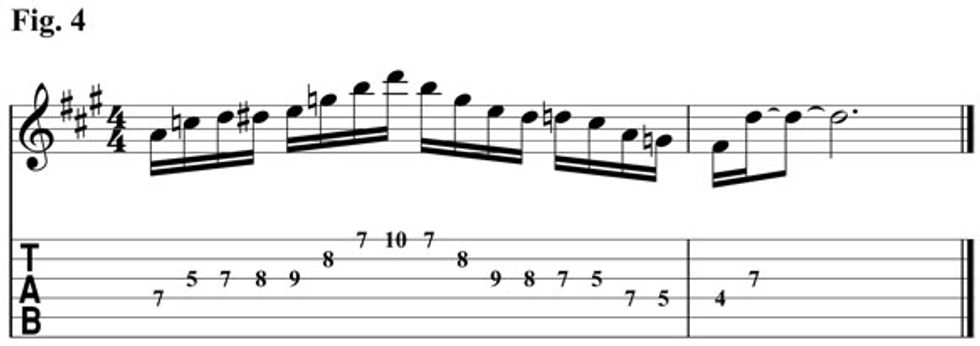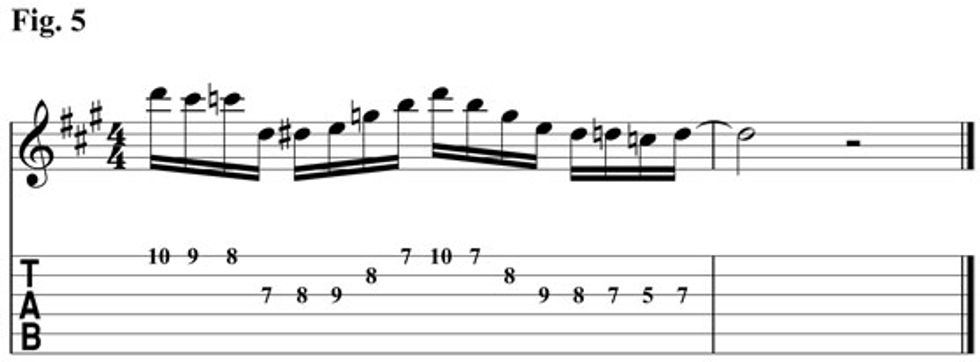| Print it! Click here to download a printable PDF of this lesson's notation. |
As a young guitarist, I noticed that a progression that I kept coming across was I–I7–IV. When I would solo over the I-IV chord change I’d emphasize the b7, giving my lead work some Mixolydian characteristics. The b7 of the one-chord (I), is the 4th degree of the four-chord (IV), and when I move to the (IV), it resolves the tension by creating the 4-3 suspension, as the (IV) chord contains the 3rd. It leads the melodic line smoothly from the I to IV.
This concept is simple enough but there are other elements to this mode that are certainly noteworthy. The diatonic chords in the Mixolydian mode are a bit different than the chords in a typical Ionian. One of my favorite differences is the minor dominant chord or minor five. Playing in major keys, and even in minor keys (harmonic or melodic minor) you get a major dominant chord. The minor dominant chord is one of the defining characteristics of the mixolydian mode.
By studying and applying the Mixolydian mode, I made use of this minor dominant when moving from the I chord to the IV chord. Instead of I–I7–IV I would use I–v–IV or G–Dm–C, if we were in the key of G. In my soloing, it gives an almost outside sound and allows me to break out of typical blues based lead guitar work.
In the following examples I’ll first illustrate a basic Mixolydian scale, a 7th arpeggio or two and finally, examples of the minor five chord in melodic ideas.
Example 1 is a Mixolydian scale encompassing all six strings. Remember the Mixolydian scale is based on the 5th degree of the major scale. You could say this is a D major parent scale making the 5th (A) the new root. Download example audio...

Example 2 is a Mixolydian arpeggio also in A, mapping out an A7 chord encompassing all six strings. Download example audio...

In Example 3 the arpeggio is an octave above the arpeggio in example 2, also mapping out an A7 chord. Download example audio...

In Example 4 the lick starts with a basic pentatonic scale then moves into a minor five chord arpeggio and resolves to the four (IV) of A (D) utilizing the Mixolydian scale. Download example audio...

Finally, in Example 5 chromatics and string skipping really add color to this Mixolydian lick again incorporating the minor five chord arpeggio mixed with the pentatonic minor scale. Download example audio...










![Rig Rundown: Russian Circles’ Mike Sullivan [2025]](https://www.premierguitar.com/media-library/youtube.jpg?id=62303631&width=1245&height=700&quality=70&coordinates=0%2C0%2C0%2C0)







